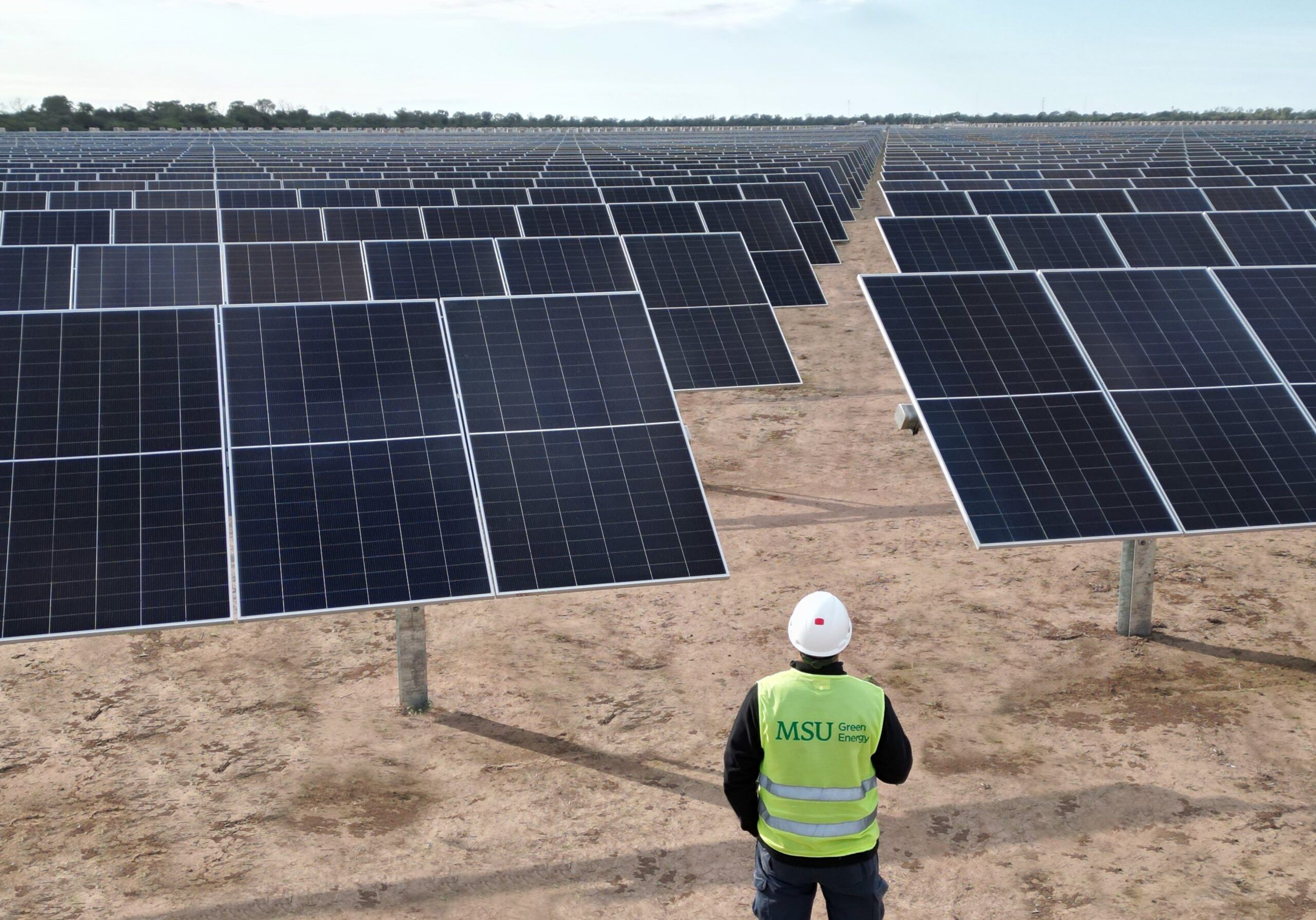
MSU is an Argentine holding company belonging to the Uribelarrea group with more than 160 years of experience in agricultural production and significant expansion in the energy sector in recent decades, transforming the national energy matrix with a strong imprint in the renewable segment.
The group is made up of MSU Agro, the original company that manages agro-industrial activities, MSU Energy, specialized in the generation of thermal energy, and MSU Green Energy, focused on the development of renewable energies and directed by Manuel Santos Uribelarrea Balcarce.
After 10 years already focused on the electricity market, where it became a very important player through the operation of three combined cycle thermal plants that generate 450 MW in total, in 2022 MSU begins to focus on the green energy market.
Led by Manuel Santos Uribelarrea Balcarce, MSU Green Energy’s main purpose is to provide energy that drives more sustainable and competitive businesses, benefiting both people and industries and contributing to the development of the country.
MSU Green Energy manages to enable the Pampa del Infierno solar park
The future of MSU and the Uribelarrea is renewable
MSU Green Energy and the Uribelarreas reaffirmed their commitment to the transition to clean energy through the operation and development of thirteen solar parks in the northwest (NOA) and northeast (NEA) regions of Argentina, some of which are still in operation. project phase. These parks have the capacity to generate 835 MW of green energy, enough to supply more than 300,000 homes.
The company aligns itself with global decarbonization objectives, contributing significantly to the reduction of CO2 emissions. The most notable projects include the Las Lomas solar park in Chilecito, La Rioja, which began operations at the end of 2023, in addition to the Ingeniero Juárez and Las Lomitas parks in Formosa.
Likewise, MSU Green Energy has made significant investments in the province of Chaco, where it has developed projects such as Pampa del Infierno (already in operation), Villa Ángela, La Corzuela, Sáenz Peña, La Escondida and Miraflores. These developments are part of a comprehensive strategy to promote the use of renewable energies and diversify the energy matrix in Argentina.
The selection of locations in the NOA and NEA regions of Argentina responds to the optimal conditions that these areas offer for solar energy generation. Thanks to their high levels of solar radiation and the availability of large areas of land, these areas allow the efficiency of solar parks to be maximized, guaranteeing constant and reliable production of clean energy throughout the year.
The recently inaugurated Pampa del Infierno solar park has become a benchmark within the Renewable Energy Term Market (MATER), being the largest of its type in this market. With an installed capacity of 130 MW, this park can supply more than 90,000 homes, significantly reducing dependence on non-renewable energy sources.
In addition to its generation capacity, this project stands out for its environmental impact. By avoiding the emission of 147,600 tons of CO2 per year, Pampa del Infierno contributes directly to the fight against climate change, aligning with global greenhouse gas reduction objectives.
Built in a record time of nine months, the solar park employs cutting-edge technology and generated more than 400 local jobs during its construction, boosting economic development and strengthening technical capabilities in northern Argentina.
Manuel Santos Uribelarrea: “from MSU we aim to reach 1GW of solar energy in the next three years”
Only a decade has passed since MSU and the Uribelarrea ventured into the power generation sector and they have already invested more than US$1.1 billion in Argentina. In recent years, it decided to focus its efforts on renewable energies, and in just three years it managed to establish itself as the largest generator of solar energy in the country.
The president of MSU Green Energy, Manuel Santos Uribelarrea, highlighted in statements to the press: «Having more clean energy allows us to move quickly towards an efficient energy transition. “At MSU, we have over 600 MW of solar under construction and operation, and our goal is to reach 1 GW in the next three years.”
Several MSU Green Energy projects are in advanced stages of construction and are expected to come into operation between the end of this year and the first half of 2025. Among them, the Villa Ángela solar park in Chaco, with a capacity of 60 MW, which will be operational in December 2024. That same month, the inauguration of the La Corzuela solar park, in General Pinedo, Chaco, with 68,900 panels and a capacity of 40 MW, is scheduled.
By early 2025, the Miraflores (20 MW) and Sáenz Peña (60 MW) parks are scheduled to come online, both in Chaco, as well as the Ingeniero Juárez and Las Lomitas parks in Formosa, with 15 MW each.
The company has set out to reach 1 GW in installed capacity, a goal that will be financed with its own resources and through financial instruments from the local market. This growth implies the development of new projects in the next three years, with greater power than the current ones, taking advantage of market opportunities and the availability of dispatch priority in the electrical network.
Energy journalist
Source: https://reporteasia.com/negocios/2024/10/01/msu-energia-renovable-uribelarrea/

